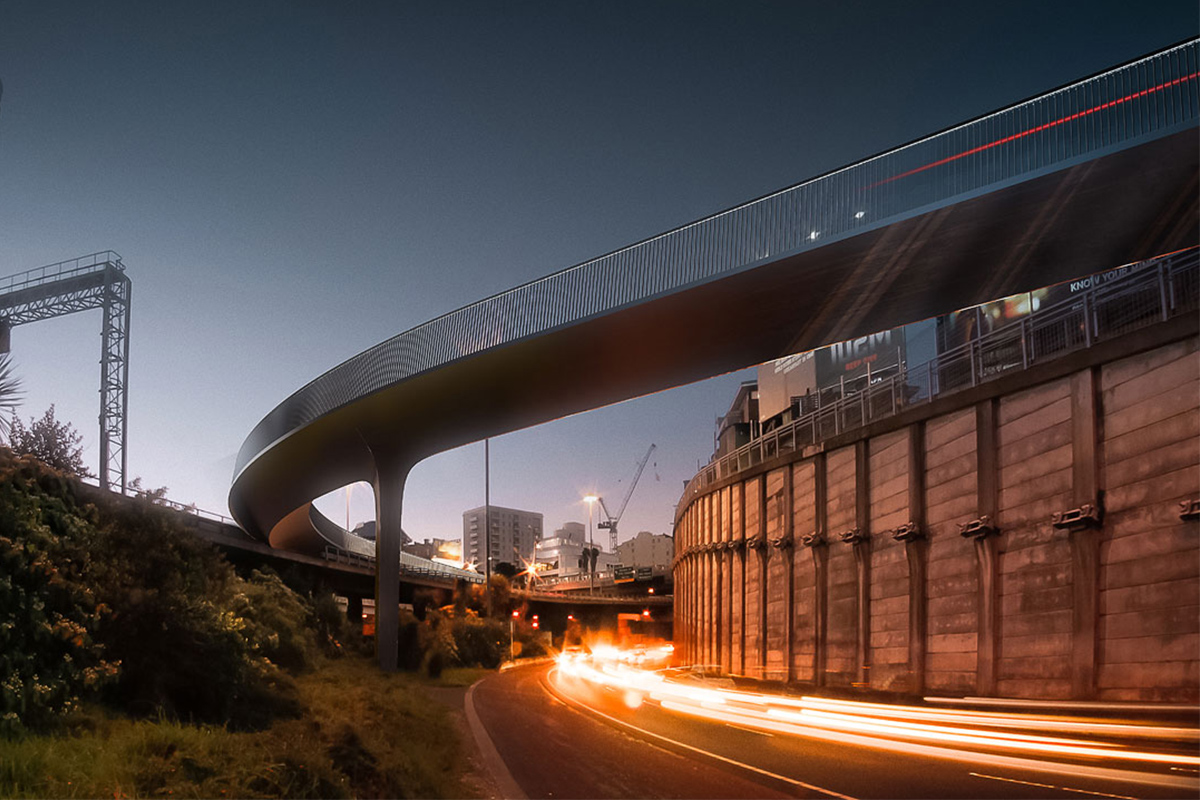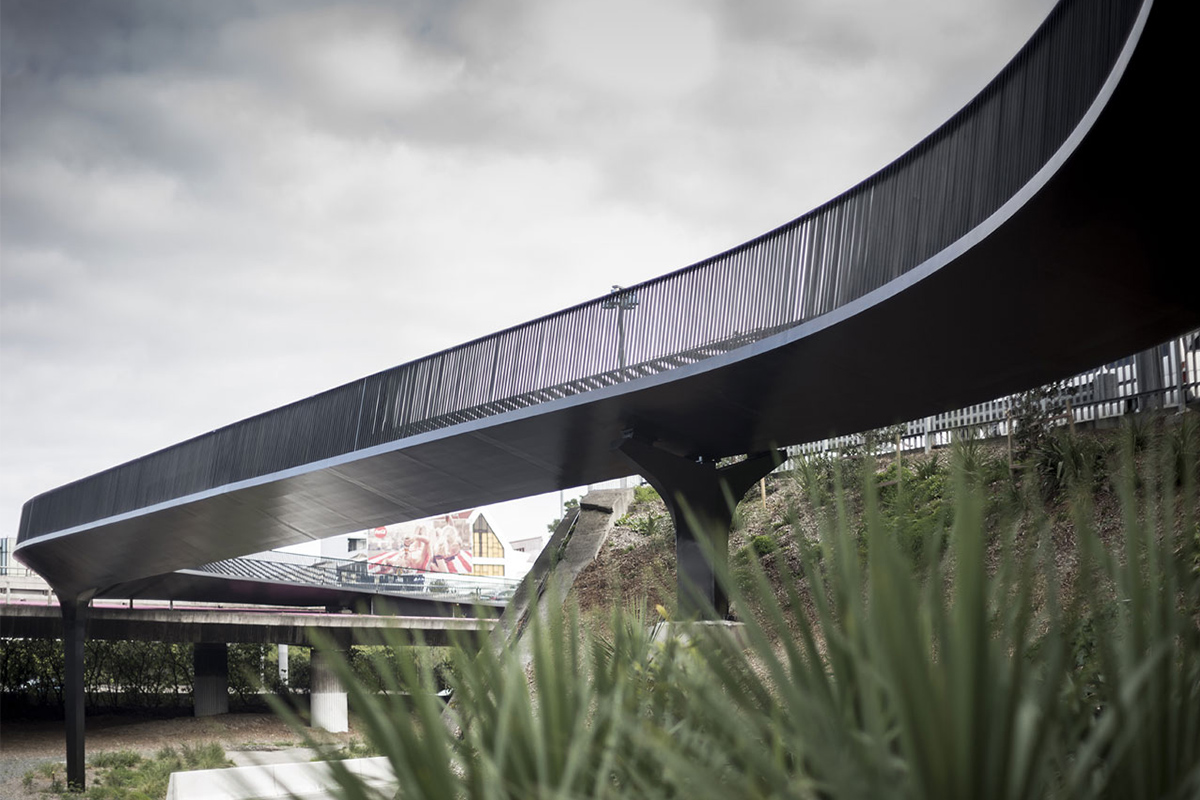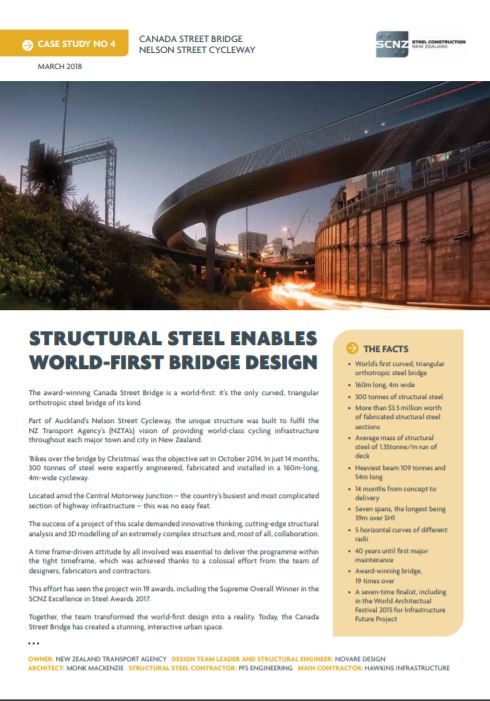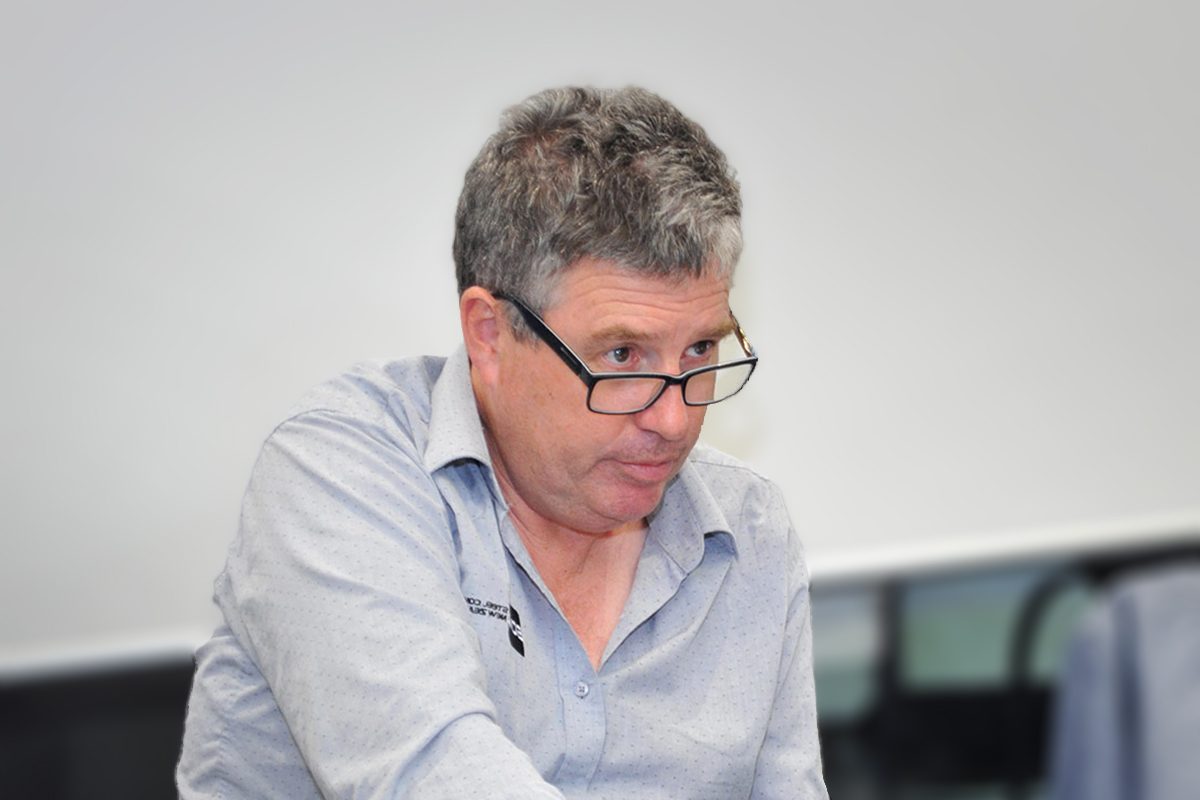Through our relationship with SCNZ, we’re excited to share a recent case study distributed by them which profiles the amazing work on the Auckland Canada Street Bridge/Nelson St Cycleway project for NZ Transport Agency.
This work was delivered by our members Design Team Leader and Structural Engineer Novare Design, Structural Steel Contractor PFS Engineering and Main Contractor Hawkins Infrastructure. Who worked in collaboration with Architect Monk MacKenzie to deliver the worlds first curved, triangular orthotropic steel bridge.

Member: Novare Design, PFS Engineering and Hawkins Infrastructure
Client: NZ Transport Agency
Duration: Oct 2014 – Dec 2015
Location: Auckland, New Zealand
This project was delivered by leveraging collaborative and innovative thinking, cutting-edge structural analysis and 3D modelling to overcome the challenges of an extremely complex structure.
The award-winning Canada Street Bridge is a world-first curved, triangular orthotropic steel bridge, and is part of Auckland’s Nelson Street Cycleway. The unique structure was built to fulfill the NZ Transport Agency’s vision of providing world-class cycling infrastructure throughout each major town and city in New Zealand.
Located amid the Central Motorway Junction – the bridge infrastructure required 300 tonnes of structural steel with an average mass of 1.35 tonne per meter run of deck for the 160m long, 4m wide structure. From concept to delivery it took 14 months to complete, and consisted of seven spans, five horizontal curves of different radii, with it’s heaviest 54 meter beam weighing 109 tonnes.
Situation
The location for the bridge construction was on one of the country’s busiest and most complicated section of highway. Requiring smart thinking to ensure minimal disruption to road users and existing infrastructure in the area. In addition sloping and poor ground conditions posed further site preparation challenges to overcome.
Function, elegance, cost efficiency, build-ability, low maintenance, and a quick turn around were clear mandates for the project team to deliver. Demanding clever engineering and designers, fabricators and contractors all working collaboratively on the same page.
Several environmental considerations also had to be taken into account in the design and construction of this bridge. The existence of contaminated land and the need to safeguard protected pohutukawa trees on-site of key concern.

Solution
From the outset, Novare envisioned a bridge that would set an aesthetic benchmark for future neighbourhood development. Their final design being dictated by practicality and functionality, where they changed the original brief to build a straight bridge to one that suited the end user. Curving the structure over the motorway, they provided a seamless cycling experience inspired by the urban surroundings. Visually unique, it’s sculptural elegance is found it its cross-section, which have a depth of 1,500mm at the main piers and tapers to a shallow 800mm mid-span.
Steel was the ‘go to’ choice for the project due to it’s easy of construct-ability for the challenging horizontal and vertical curves, haunching, pre-cambers, and changing gradients, spans and supports. The assembly of thin steel plates for the isotropic deck allowing the bridge to avoid sharp turns, despite its complex geometry. Extensive precautions were also taken to ensure seismic stability and ability to withstand additional stresses. Introducing closed-cell isotropic decks and ribs running along the inside of the shell to provide extra strength and buckling resistance.
PFS used Novare Design’s 2D engineering drawings to produce a 3D model of the bridge, enabling computer-controlled cutting of the curved steel plates. This precision meant the bridge beams and piers were fabricated within a 1mm tolerance of the 3D model – reducing costs in time, rework and more.
On top of this, disruption was a key consideration for the project team. Leveraging Hawkins Infrastructure’s experience with similar projects, they overcame this by effectively coordinating smooth site works. Referring to the 3D models to efficiently install sections – often during the night when traffic was minimal. Partnering with PFS Engineering they mimimised disruptions further by fabricating manageable sections offsite to a size safe for transport to it’s final location.
The introduction of a corrosion protection system specified for the bridge’s deck and piers further streamlined the project in terms of ongoing maintenance costs. Consisting of 50-micron-thick layer of thermal sprayed zinc, a seal coat system of 75-micron-thick epoxy zinc phosphate primer, and a 75-micron-thick glossy black acrylic polysiloxane top coat – maintenance attention isn’t required for 40 years, as it’s proven to be weather resistant and have excellent colour and gloss retention.
The introduction of steel deck and piers meant there would be minimal earthworks required – overcoming environmental concerns in terms of the contaminated land present, and risk to protected pohutukawa. It also provided space to enable the planting of natives on the steep banks and under the bridge to reduce erosion.
Results
A time frame-driven attitude by all involved was essential to deliver the program within the tight time-frame, which was achieved thanks to a colossal effort from the team of designers, fabricators and contractors.
Together, they transformed the world-first design of the Canada Street Bridge and Nelson Street Cycleway into a reality.
Today, its created a stunning, interactive urban space and is the recipient of 19 awards, including the Supreme Overall Winner in the SCNZ Excellence in Steel Awards 2017.
HERA has several key relationships to ensure we’re able to deliver our core remit in heavy engineering, research and innovation. SCNZ is undoubtedly one of them.
Both organisations share a deep history, which today has seen us form separate entities that together are committed to collaborating to service the needs of the New Zealand steel construction industry.
SCNZ does valuable work in being the voice for the diverse structural steel industry here in Aotearoa. As the first port of call for structural steel enquiries, they also promote the benefits of structural steel solutions, facilitate relevant networking, support industry to thrive and grow and represent their members view to key industry and government decision makers.
HERA supports this by providing certification, R&D, evidence based development of standards, guidelines and similar, and promotion of steel construction projects.

